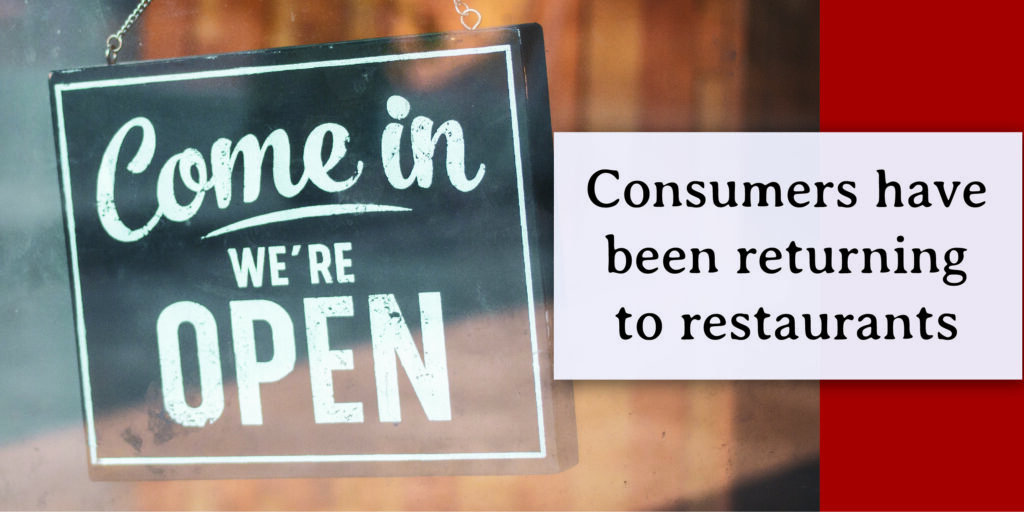In Short Supply
Rising Food Costs and Supply Shortages
Courtesy of UniPro Foodservice, August 1, 2021
Following months of uncertainty, restaurants are continuing to rebound from the devastating effects of the pandemic, but the combination of rising food costs, supply issues, and labor shortages are still plaguing businesses.
In June, the National Restaurant Association’s analysis of Bureau of Labor Statistics data indicated that food prices were up 9.6% since June 2020.
Major commodities registering the highest price increases year-over-year include: Fats and Oils, Chicken, Pork, Seafood, Eggs & Flour
Some restaurateurs are increasing menu prices to keep up with post-pandemic food inflation.
“Food inflation is definitely heating up,” says Hudson Riehle, the Association’s SVP of Research. Menu prices in June were up 3.9% on a year-to-date basis, essentially marking it as the highest growth rate since 2009, and wholesale food costs are up 4.1% year-to-date, the highest since 2014. Proteins—chicken, beef, pork—are posting the highest growth, and current USDA projections aren’t showing much relief this year. To cope, operators are adjusting their menus and portion sizes in tandem with raising menu prices.”
Supply shortages as business ramps up
Commodities analyst John Barone says much of the reason for the price increases is due to short supply. For the last several months, at least since April and especially in June and July, consumers have been returning to restaurants. At the same time, they’re continuing to make grocery runs, and manufacturers haven’t been able to scale up production. “They can’t get the raw materials needed or the necessary labor to process them,” he says. “Because of this, they’re struggling to meet demand with tight supplies and, in some cases, outright shortages.”
Chicken is in very short supply, particularly wings. During the pandemic, wings especially have been a great takeout item. That’s one of the reasons for the proliferation of virtual wing concepts. But the only way to increase the number of wings available is to increase the number of birds in production, and that’s where everyone is struggling, he says. Breast meat supplies are coming back, he notes, but prices are still high. To meet demand and keep costs at bay, some restaurants are re-engineering their menus to offer more dark meat selections.
“Wingstop, for example, decided to roll out chicken thighs as an alternative item,” he says. “The brand is taking a shot at it, mostly virtually, not at their brick-and-mortar locations, so it’s not a huge investment. Nevertheless, the price of dark meat is also increasing because it’s seen as a good alternative.”
Another trouble spot, Barone warns, is fryer oil. The price of soybean (vegetable) oil, a staple at restaurants, is already running at more than twice the 5-year average, and isn’t going to come down anytime soon, he says. In addition, nearly half the soybean oil processed in this country—approximately 46%—is turned into biodiesel fuel, according to the U.S. Department of Agriculture.
Menu price increases? Not so fast …
Industry consultant Larry Reinstein, president of LJR Hospitality Ventures, says that other than the current labor shortage, rising food costs and short supplies are the most pressing issues for restaurant operators.
He doesn’t think the situation will be remedied for at least several months. It’s not just the rising prices of food items, but also the shortage of packaging materials that are creating this huge impact. If restaurants are looking to raise menu prices to compensate for increased costs, he advises companies that it might make more sense to hold the line for a little longer.
“Labor costs are lower because of new operational efficiencies, but also because of the inability to find staff,” he says. “In many cases restaurants aren’t executing as well, and a bump in price could have a negative effect on their guests’ perception of value. It’s really going to come down to how well restaurants know their guests, and their guests’ understanding of how well they think the restaurants are executing.”
Feeser’s is a proud member-owner of UniPro Foodservice, the largest food distribution cooperative in the world.
Source: National Restaurant Association, Unipro




